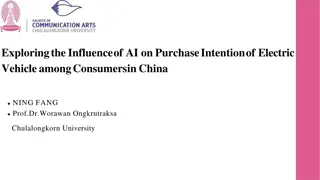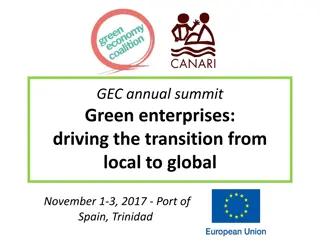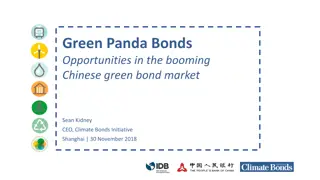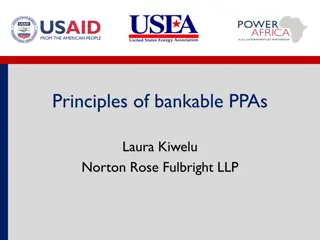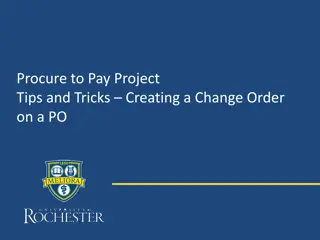Information Impact on Green Power Purchase Choices
Effective information communication plays a significant role in shaping individual willingness to pay for green power initiatives, particularly in regions facing serious air pollution concerns. This study delves into the hypothesis that households' knowledge about green power influences their willingness to pay, exploring factors like cost information, emission advantages, and environmental benefits. Through a detailed research structure, including valuation methods and literature review, the study aims to provide insights for policy makers and stakeholders in the green power sector.
Download Presentation

Please find below an Image/Link to download the presentation.
The content on the website is provided AS IS for your information and personal use only. It may not be sold, licensed, or shared on other websites without obtaining consent from the author.If you encounter any issues during the download, it is possible that the publisher has removed the file from their server.
You are allowed to download the files provided on this website for personal or commercial use, subject to the condition that they are used lawfully. All files are the property of their respective owners.
The content on the website is provided AS IS for your information and personal use only. It may not be sold, licensed, or shared on other websites without obtaining consent from the author.
E N D
Presentation Transcript
How does information affect willingness to pay for green power? Yang Zhou Fudan University
Background In 2015, there are more than 80 mild air pollution and above days in Shanghai. In Northeast China, the air pollution situation is even more serious, especially in winter. According to the researches, more than half of the air pollution are due to coal-burning. Among all the coals used in Shanghai, more than half of them are used in fire power plants.
Motivation Policy change Electricity market reform and Promote market competition The survival problem for Green Power A deeper understanding for the competitiveness of green power Subsidies are not enough for the high-speed development of green power Need more support from demand side WTP for green power is the basement for related policy Value of Green Power = Direct value + Indirect value Green power is a impure public goods The indirect value of green power can not be priced because of its public character In most researches, the basic assumption is perfect information
Hypothesis Households have perfect information on green power, and giving them any information will not change their WTP. Household do not have perfect information. If we give them the cost information that is higher than we they think it was, their WTP will decrease and vice versa. If we give them the emission advantage that is higher than we they think it was, their WTP will decrease and vice versa. If we give them the environment benefit that is higher than we they think it was, their WTP will increase and vice versa.
Research Structure Background and motivation Valuation of green power Supply of green power Subsidies Market structure Main research method WTP for green power in Shanghai Contingent Valuation Method Double- Bounded Utility Probit MLE Survey Theory Regression Method WTP and influence factor
Literature review Main factors that will influence WTP for green power Population character, including gender, age, health situation, education etc. Resource structure National fixed character Knowledge about green power
Literature review Stated preference method Contingent valuation Single-bounded the simplest method Double-bounded more efficient than single-bounded Payment card approach more subjective to the question Opening question limited information Choice experiment Virtual contracts sometimes can be confused Based on the education level and population structure in shanghai, we use the simplest way in contingent valuation method for the research.
Literature review Contingent Valuation Method (CVM) Single bounded CVM application for valuation estimation (Bishop and Heberlein, 1979) Earliest research on green power using CVM in 1996 (Farhar and Houston, 1996) Weakness of lower efficiency for SBDC method Double bounded CVM for WTP research (Hanemann ,1991) Anchoring effect or starting-point bias and modified model on DBDC ( Herriges and Shogren 1996, Alberini et al. 1997) We use the modified double-bounded CVM for the research
Model WTP Willingness to pay and the selection of the respondents W= ?? + ? For people answered to the bid price ? ??????= 1 ?? ?1 ??? ?? ? ??? ?? = 0 ?? ?1 ??? ?? ? ??? ??
Model For people whose answer to both bid price is yes, b2 ? ? 11= ???? c ????1= 1,? ????2= 1 = 1 ? ?? b2 ? ? b1 ? ? b1 ? ? b2 ? ? b2 ? ? 10= ???? c ????1= 1,? ????2= 0 = ? ?? ? 01= ???? c ????1= 0,c ????2= 1 = ? ?? ? 00= ???? c ????1= 0,c ????2= 0|??= 1 = ? ??
Model So, the Log-likelihood function to maximize is, ln[1 ?(?2 ?? ??? = )] ? ? ????1=1 ? ????2=1 ln[?(?2 ?? ) ?(?1 ?? )] + ? ? ? ????1=1 ? ????2=0 ln[?(?1 ?? ) ?(?2 ?? + )] ? ? ? ????1=0 ? ????2=1 ?2 ?? ? + ln 1 ? ? ????1=0 ? ????2=0
Anchoring effect and starting-point bias Anchoring effect (Herriges and Shogren, 1996) Starting-point bias (Chien et al., 2005) Using the new ?2 for the estimation in the log-likelihood function ?2= ?? + ????????+ ?
Question design of double-bounded CVM Will you pay (X+0.02) more cents per KW.h for green power Will you pay X cents more per KW.h for green power Will you pay (X- 0.02) more cents per KW.h for green power Would you like to pay for green power? Why would not you want to pay more for green power? Based on the preliminary research, we set the beginning bid price set as {4, 6, 8, 10, 12, 14, 16 and 18 cents/kw.h} and randomly assign them to respondents. Totally there are 2751 effective respondents.
Summary Statistic Sample Pudong Shanghai Gender 46.55% 51.66% 49.62% Age 47.63 46.54 47.62 Education level 36.33% 54.51% 35.60% junior school 19.71% 19.01% 24.00% high school 12.94% 9.44% 18.10% community college 23.70% 10.36% university 22.30% 7.33% 2.09% graduate Unemployment 10.99% Self-owned 82.40% House space 26.24 27.97 27.25 Income 5347.88 4798.30
Definition of variables Variables LN(income) Definition Natural log of average monthly home income (yuan) Education Education level Employment If the respondents is employed, if not it's 1, if employed it's 0. Rental if the house is rental, this variable will be 1 Space The house square of the respondent House age The house year in use of the respondent Pollution days The pollution days in respondent's memory during 2016 Pollution level The pollution level the respondents feel in 2016 Anti -pollution The anti-pollution devices the respondent bought. Knowledge The knowledge level about the electricity price in Shanghai Cost If the respondents was given the cost information about green power Emission If the respondents was given the emission benefit information about green power Environment If the respondents was given the environment benefit information about green power
Basic Results With information source Estimate 0.704** (0.311) -0.021* (0.012) 0.967*** (0.097) 1.122*** (0.151) -0.442 (0.342) -4.299*** (0.482) 0.018*** (0.006) 0.525*** (0.172) 0.13*** (0.019) 5.539*** (0.156) Starting-point bias Estimate 0.434** (0.206) -0.007 (0.008) 0.956*** (0.074) 0.882*** (0.102) -0.27 (0.221) -2.879*** (0.328) 0.011*** (0.004) 0.356*** (0.113) 0.09*** (0.013) 3.781*** (0.138) Basic model Anchoring effect Variables Estimate 0.65** (0.322) -0.017 (0.013) 1.039*** (0.104) 1.201*** (0.152) -0.347 (0.331) -4.326*** (0.578) 0.018*** (0.006) 0.475*** (0.171) 0.129*** (0.02) 5.567*** (0.155) Estimate 0.886** (0.418) -0.023 (0.016) 1.073*** (0.13) 1.594*** (0.199) -0.504 (0.456) -5.646*** (0.632) 0.022*** (0.007) 0.577*** (0.215) 0.158*** (0.025) 7.28*** (0.327) Gender Age LN(income) Education Employment Rental Space Knowledge Houseage Sigma( )
Anchoring and Starting-point bias 0.484*** (0.027) Gamma( ) -2.902*** (0.409) Starting 0.04 -1.197*** (0.456) Starting 0.06 0.425 (0.554) Starting 0.08 1.616*** (0.431) Starting 0.12 1.943*** (0.37) Starting 0.14 2.676*** (0.443) Starting 0.16 4.907*** (0.463) Starting 0.18
Environment knowledge With information source Starting-point bias Basic model Anchoring effect Variables Estimate Estimate Estimate Estimate 0.015*** (0.004) 0.015*** (0.004) 0.011*** (0.002) 0.021*** (0.005) Pollution days 1.19*** (0.245) 1.127*** (0.251) 0.856*** (0.166) 1.566*** (0.34) Pollution level 0.573 (0.355) 0.554 (0.339) 0.237 (0.22) 0.569 (0.435) Anti-pollution 0.854*** (0.177) TV 1.538*** (0.239) Domestic 1.63** (0.789) International 1.345*** (0.383) Monitor
Information effect With Starting-point bias Anchoring effect Basic model information source Variables Estimate Estimate Estimate Estimate -0.935* (0.487) -0.932** (0.448) -0.688** (0.306) -1.259* (0.678) Cost 0.591 (0.509) 0.65 (0.466) 0.392 (0.335) 0.748 (0.668) Emission -1.363** (0.419) -1.288*** (0.381) -0.78*** (0.275) -1.458** (0.632) Environment
Conclusion and Innovation We adopted the Double bounded CVM method for WTP research. The main individual character that will influence household s WTP for green power are Income, Gender, Age, Education level and knowledge of the resource and pollution. In the research, there truly exists an anchoring effect and starting-point bias. Based on the modified DB CVM model, we calculated a higher WTP, which also consists with other literatures. In our sample, the estimated total willing payment for the indirect value of green power in Shanghai is about 3.06 billion Yuan RMB per year. The government should set up channels to the access of funds from the households for a better development chance of green power.
Conclusion and Innovation Information may influence households willingness to pay for green power. The more knowledge about the environmental problems, the higher willing payment for green power. Household did not have perfect information on Green power. Household think that the cost and benefit of Green power is better than it truly is. If the advantages of green power do not meet households expectation, this kind of information would lower households willingness to pay for green power. It is suggested that the government should improve the relevant information disclosure mechanism, disclose the ecological environment status to residents in a timely and multi way.
Thank you! yangzhou@fudan.edu.cn










